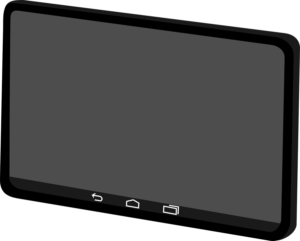
Projected capacitive is one of the world’s leading touchscreen technologies. It’s a form of capacitive technology that’s designed to measure capacitance in order to identify touch commands. Capacitance is an electrostatic field. Projected capacitive is simply an advanced form of capacitive technology that uses a grid of electrodes to form thousands of individual keys.
Even if you’ve used a projected capacitive touchscreen, though, you might be unfamiliar with their construction. Not all projected capacitive touchscreens are the same. With that said, most of them are made of a few basic components, including the following:
Sensor Glass
The sensor glass is an important component for projected capacitive touchscreens. It’s a layer of glass that, as the name suggests, is designed to sense or detect touch commands. How does the sensor glass work exactly? While it consists of pure glass, the sensor glass features patterned electrodes on it. The electrodes are arranged in a grid-like formation consisting of rows and columns that intersect each other. Performing a touch command will result disrupt the electrostatic field that runs through these electrodes.
Cover Glass
Projected capacitive touchscreens typically feature a cover glass well. The cover glass is another layer of glass. With that said, it serves a different purpose than the sensor glass. The sensor glass is responsible for detecting touch commands. The cover glass, on the other hand, is designed to protect the sensor glass and its patterned electrodes.
The cover glass is found on top of the sensor glass. It shields the patterned electrodes from moisture and other contaminants, thereby allowing the projected capacitive touchscreen to be used in humid environments without succumbing to damage. Without a cover glass, the sensor glass would be directly exposed to the elements, which could lead to damage.
FPC
In addition to the sensor glass and cover glass, most projected capacitive touchscreens feature a Flexible Printed Circuit (FPC). The FPC is the metaphorical “heart” of a projected capacitive touchscreen. It features the circuitry that’s needed to identify and respond to touch commands.
All touchscreens require a circuit board. For projected capacitive touchscreens, an FPC is typically used. FPCs are flexible circuit boards that contain the touch controller. The touch controller, of course, is responsible for converting analog touch signals into digital touch signals so that the touchscreen can respond to them. Most projected capacitive touchscreens are made of a sensor glass, coverglass and FPC.
